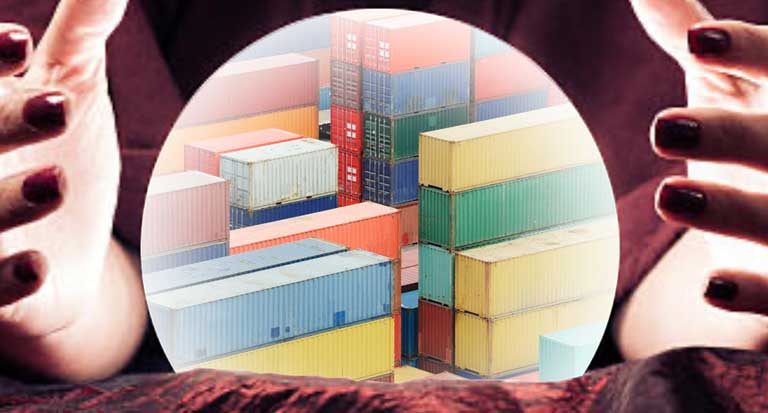This is the last time that we will predict the future. The next time we write about this topic, will be April where we will then report facts. April to September is peak season which always has larger volumes than the slack season, which is October to March. Today in slack season, we are already at volume levels that have created congestion in some ports. Vancouver is already experiencing some congestion and the Los Angeles/Long Beach port complex is currently at high throughput levels.
Recently, noted reporter Lori Ann LaRocco reported in FreightWaves that due to canal closures, a potential East Coast labor strike and other issues, that volumes to the Los Angeles/Long Beach port complex could increase by 25%. This dramatic volume increase will certainly cause congestion and delays.
Before Covid hit the world by surprise, cargo volumes to the USA were expected to grow steadily reaching approximately 21 million TEU annually by 2025. That level was reached in 2022 because of the changes in buying habits created by the Covid lockdown. This time, the volumes are here to stay, being driven by the current supply chain activity of the US market.
A solution must be found. There is a limited amount of time for importers to put process changes in place. There is no time left to affect infrastructure changes.
We offer a number of suggestions for importers:
1) Allow the ocean terminals to plan their container stacks by:
a) use the advanced manifest filing (AMS) and ISF filing to feed data to the Customs Broker electronically in order to clear cargo in transit
b) obtain the carrier release while the cargo is in transit
c) obtain a pickup appointment with the ocean terminal prior to arrival. In this way, the ocean terminals can pre-plan their stacks prior to vessel arrival to gain the efficiency needed to clear the terminal more quickly and move away from digging out containers on a one-by-one basis. The United States can no longer afford this type of inefficiency.
2) Alternatively, importers could give serious consideration to the PNW gateways for any cargo destined East of the Mississippi River – Minneapolis, Chicago, The Ohio Valley, Detroit, New York, Boston, St Louis, Memphis, Dallas and others – these are all points serviced by the UP and the BN over the ports of Tacoma and Seattle. There is an unoccupied terminal seeking an occupant in Seattle. This is how uncongested the Northwest Seaports Alliance (NWSA) ports are today.
3) Consider taking advantage of port community-wide peel-off stacks which are the future of port efficiency. Studies conducted as many as five years ago that the efficiencies needed to handle the future volumes can only be achieved by the use of no less than 85% port-wide peel off processes.



